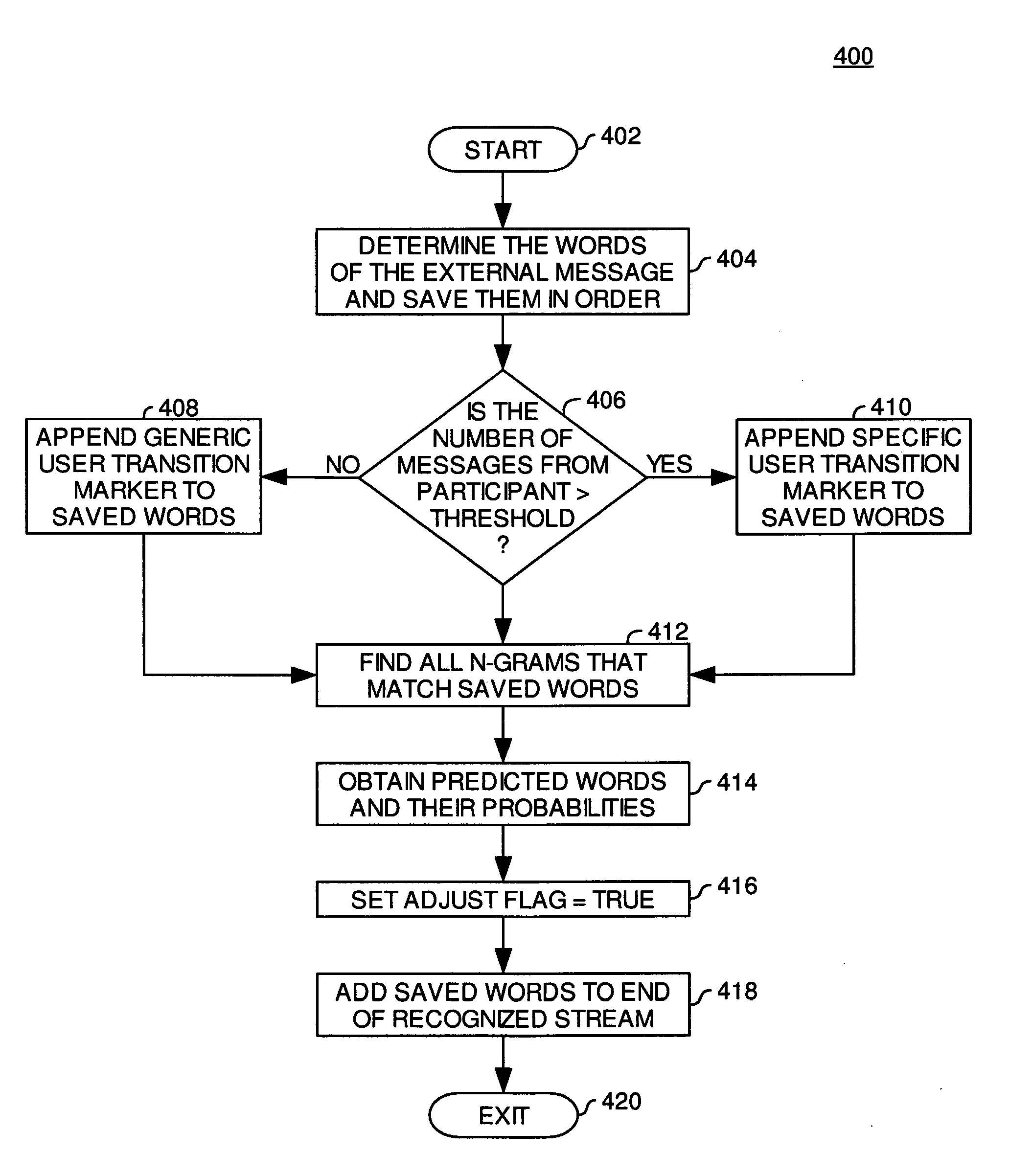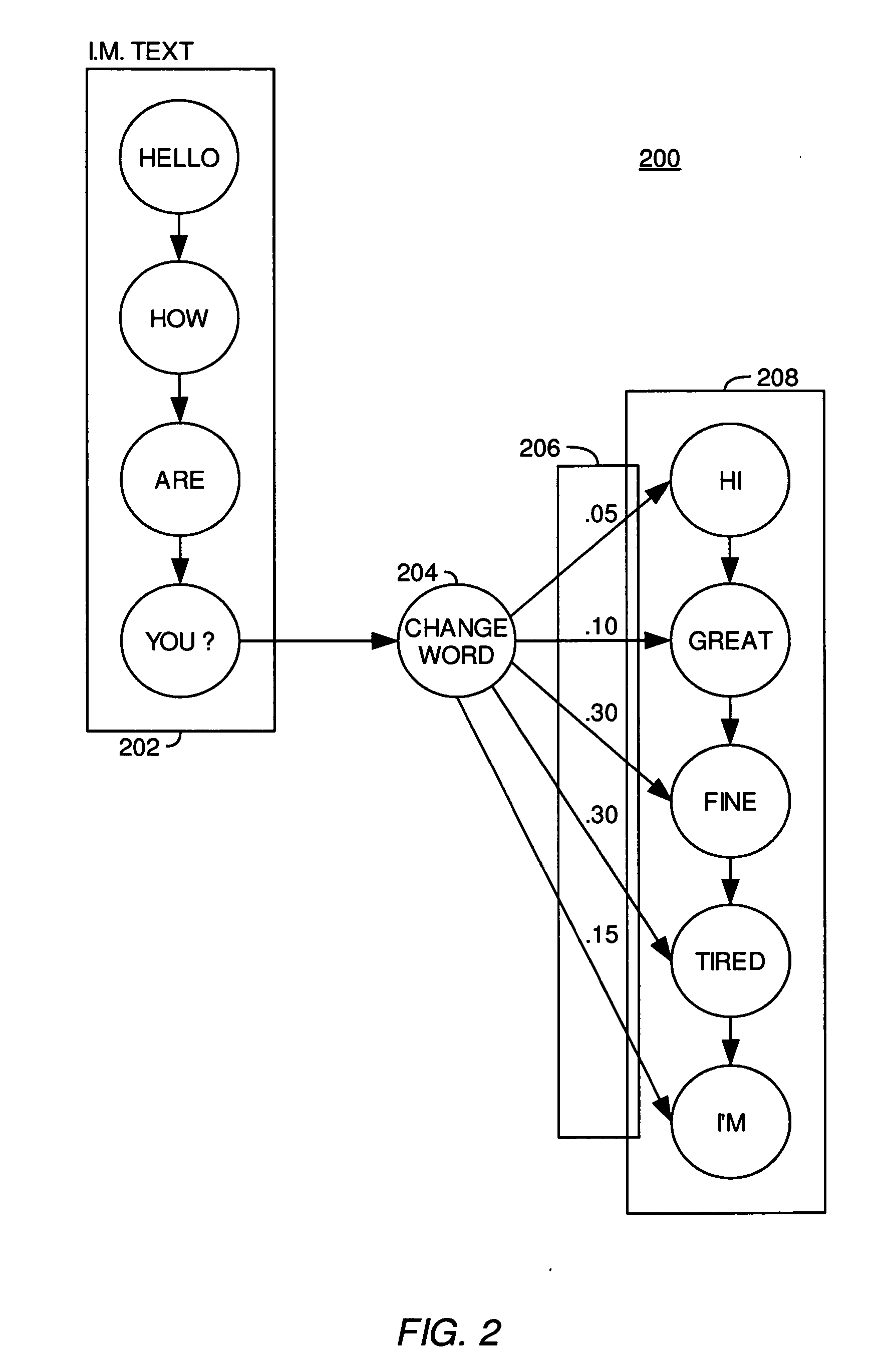Speech recognition system for providing voice recognition services using a conversational language model
a conversational language model and speech recognition technology, applied in speech recognition, speech analysis, instruments, etc., can solve the problems of system lag, users may lack the patience to use the system, and system time consumption and other issues
- Summary
- Abstract
- Description
- Claims
- Application Information
AI Technical Summary
Benefits of technology
Problems solved by technology
Method used
Image
Examples
Embodiment Construction
[0023] Embodiments of the present invention generally provide a method, system and article of manufacture for adjusting a language model within a voice recognition system based on environmental context or other external influences. In one embodiment, the language model may be adjusted based on text received from an external application. For example, the external application may supply text representing the words of one participant to a text-based conversation. In such a case, adjustments may be made to a language model by analyzing the external text received from the external application. For example, by accounting for the external text received from an Instant Messaging (IM) application, modifications may be made to certain n-gram probabilities.
[0024] Further, participant specific adjustments may be made to the language model, depending on the individuals participating in the text-based conversation. For example, two teenagers may speak with one another quite differently than when...
PUM
 Login to View More
Login to View More Abstract
Description
Claims
Application Information
 Login to View More
Login to View More - R&D
- Intellectual Property
- Life Sciences
- Materials
- Tech Scout
- Unparalleled Data Quality
- Higher Quality Content
- 60% Fewer Hallucinations
Browse by: Latest US Patents, China's latest patents, Technical Efficacy Thesaurus, Application Domain, Technology Topic, Popular Technical Reports.
© 2025 PatSnap. All rights reserved.Legal|Privacy policy|Modern Slavery Act Transparency Statement|Sitemap|About US| Contact US: help@patsnap.com



